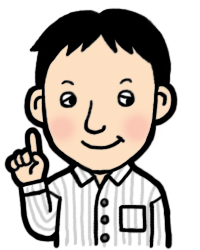
Sunmark Publishing Rights Highlights
and NEWS Mail--December 2017 Issue
Hello!
I’m Kanako Kurokawa, an editor and a member of the Rights Department at Sunmark.
I attended the Frankfurt Book Fair last month and had many meetings. That was the sixth time I had visited Frankfurt. I found some interesting books there that sounded good for Japanese readers.
I was especially interested in a book about sisu. Sisu is a Finnish concept, and in a word, it means “endurance” or “resilience”. I think Finnish and Japanese people have a lot in common, so the sisu book should be well received by the Japanese.
In Frankfurt I met many friends and business partners from all over the world. I felt strongly that global bestsellers (e.g., The Life-Changing Magic of Tidying Up by Marie Kondo) are driven by connections between these people!

If you have any questions or inquiries about this NEWS Mail, please contact Ms. Shino Kobayashi, Rights Manager (rights@sunmark.co.jp).
The Stanford Method for Ultimate Sound Sleep and The “Trunk Muscle Reset Diet” That Top Models Have Kept Secret are doing very well in the market.
Both are ranked in the top 10 bestselling lists of several major nationwide bookstore chains and distributors in Japan. The methods discussed in those books have been picked up and featured in TV programs, which has boosted their sales after being aired.
Editors of the Month

An older editor who’s young at heart
Though I’m the oldest editor in my company, for several years I’ve been overdosed with a young Japanese young rock band called “back number”.
Singing their songs in karaoke sessions is kind of my secret pleasure.
My hobby is sports and playing guitar, and these days I’ve been particularly bent on bowling, appropriate for my age.
Being Hungry Makes You Healthy by Yoshinori Nagumo, M.D.
The Rules of the Full Moon by Yasuyuki Sato
Take Soapless Baths for Rejuvenated Skin! by Yoko Takahashi
 Hello, my name is Akiko Kuwajima, and I’m a member of the editorial department at Sunmark Publishing.
Hello, my name is Akiko Kuwajima, and I’m a member of the editorial department at Sunmark Publishing.
I love reading, traveling and eating. Every summer I go to Okinawa, where I spend my days reading, drinking beer and millet brandy and hanging out at the ocean.
I’ve done a wide variety of books, such as those on business, psychology, cooking, manga, and other topics. My aim in editing is to create a book that will help others in some way.
Thought Training by Makoto Ito
ISBN978-4-7631-3623-7 C0036
159 pages / Jyly 2017 / 1,300 yen (w/o tax)
This 5-minute method for improving blood flow will eliminate a variety of conditions such as high blood pressure, frozen shoulder, depression and dizziness!
We know that blood flow is an extremely important part of good health. We also know that exercise helps increase blood flow. But exercising can be difficult for various reasons such as injury, illness or a lack of time. The good news is that there’s a spot on our hand that acts as a switch that instantly improves blood flow throughout the body. All you have to do is push it.
In Eastern medicine, this all-purpose pressure point is called gokoku. If you’re thinking this is just another book about pressure points, you’d be very wrong. The difference is that the author, Dr. Watanabe, has helped countless people remedy their chronic conditions with his treatments. He has answered the hopes and prayers of many patients who longed to improve their high blood pressure, relieve pain or cure conditions of an unknown cause.
Dr. Yoshihiko Watanabe is a cardiovascular internal medicine specialist and medical professor at Tokyo Women’s Medical University’s Higashi Medical Center. He often appears on television to discuss cardiovascular health, and is known for always wearing a blood pressure monitor around his wrist, but this book focuses on his clinical data and treatments related to gokoku.
Chronic conditions such as high blood pressure, stiff shoulders, frozen shoulder, Temporomandibular Disorders (TMD) , vertigo, depression, and vision and hearing impairment can be treated just by pressing the gokoku. It has been dubbed the “long-life switch,” having turned around the lives of many patients.
The hurts-so-good treatment method is easy and effective. You need to do it only twice a day for 10 minutes each time — 5 minutes for each hand.
Dr. Watanabe explains how to easy it is to find the pressure point. You don’t even need to hit the pressure point directly; being slightly off won’t make a difference. Massaging the gokoku pressure point will help you live a much more comfortable life.
 Dr. Watanabe’s finger pressure massage was quite painful for me. As he massaged my hand, he explained he could tell by the firmness of my hand how stiff my shoulders were. I was just cringing, trying not to stop breathing, and waiting for it to be over. However, once I opened my eyes again, I felt like I could see more clearly than before. My shoulders also felt more limber than ever. My body was warm and I started to perspire. This happened before we began working on the book, and many experiences shared by other patients since then have proven the effectiveness of the treatment. In this book, we explain why pressing a particular point on the hands brings such massive results. You’ll be eager to share this hurts-so-good health method with all of your friends and family!
Dr. Watanabe’s finger pressure massage was quite painful for me. As he massaged my hand, he explained he could tell by the firmness of my hand how stiff my shoulders were. I was just cringing, trying not to stop breathing, and waiting for it to be over. However, once I opened my eyes again, I felt like I could see more clearly than before. My shoulders also felt more limber than ever. My body was warm and I started to perspire. This happened before we began working on the book, and many experiences shared by other patients since then have proven the effectiveness of the treatment. In this book, we explain why pressing a particular point on the hands brings such massive results. You’ll be eager to share this hurts-so-good health method with all of your friends and family!
ISBN978-4-7631-3523-0 C0036
270 pages / July 2017 / 1,400 yen (w/o tax)
A smoking cessation specialist’s fun and clever guide to quitting.
Determination, perseverance, a trip to a smoking cessation clinic and reading are all important in your quest to quit smoking. But somehow it always ends in failure, making you feel weak-willed and eventually giving up all together.
The author insists, actually, that it has nothing to do with a weak will.
He says it’s unwise to rely on your willpower to reach your goals. Before trying to quit, it’s important to know what type of dependency you have: physical, behavioral or psychological. Just choosing to “go for it” isn’t the right way to quit successfully.
Simply put, as long as you know what type of addiction you have, you can quit without much effort or willpower. This book, written by a medical specialist with 18 years of experience in mindfulness, neurology and psychology, provides an easy way to quit smoking.
Are you ready to quit for good?
Chapter 1 Why is it so hard to quit smoking?
Chapter 2 Three reasons why you can’t quit
Chapter 3 How to get over a physical addiction
Chapter 4 How to get over a behavioral addiction
Chapter 5 How to get over a psychological addiction
Chapter 6 Exercise self-control for better results
Chapter 7 Your life will improve after you quit smoking

Discussions about second-hand smoke and price hikes have brought a lot of attention to cigarette smoking, and many smokers are looking to quit.
I’m not a smoker, but this book taught me a lot about brain science, psychology and mindfulness. Although I don’t smoke, I sometimes binge drink, and I realized that this book could also help many people achieve sobriety.
This book provides the definitive method for giving up cigarettes, and I hope it reaches to people who needs it.